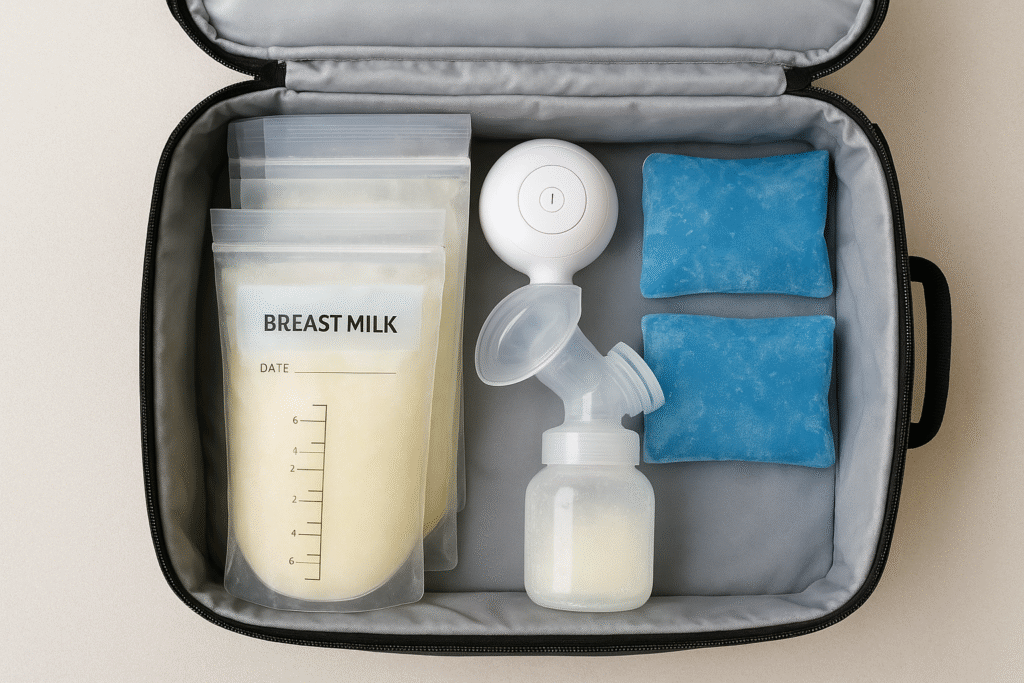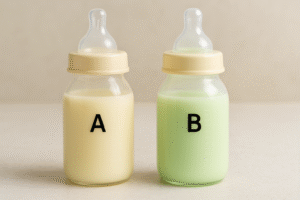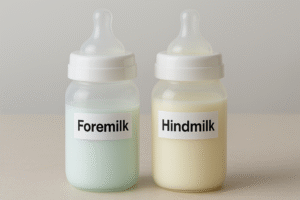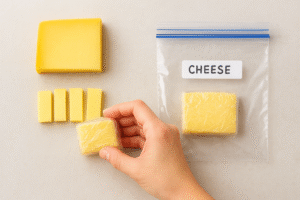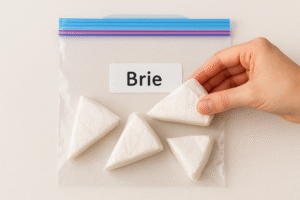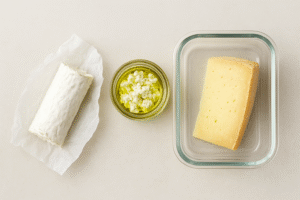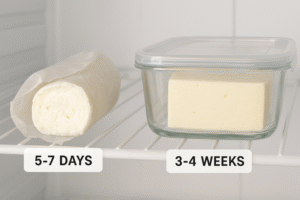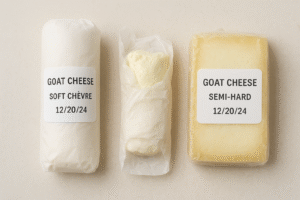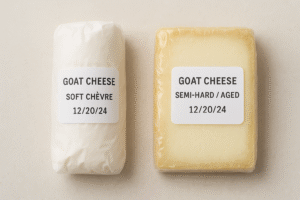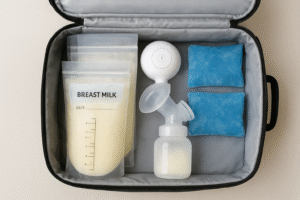✈️ Why Traveling Moms Need Special Breast Milk Rules
Whether you’re a new mom flying for work or a family trip, traveling with breast milk can feel stressful — especially when you’re unsure about TSA rules, storage safety, and temperature control.
The good news? U.S. TSA (Transportation Security Administration) allows you to carry breast milk, even when you’re not traveling with your baby.
This guide will show you exactly how to pack, store, and pass through airport security without stress — all while keeping your milk safe, fresh, and leak-free.
If you’re a pumping mom who’s often on the move, you may also find our guide on how to store breast milk on the go helpful for short trips or daily commutes.
🧊 TSA Rules for Carrying Breast Milk (U.S. 2025 Update)

According to the TSA’s official guidelines, breast milk is considered a medically necessary liquid, so you can bring it in quantities greater than 3.4 oz (100 mL).
Here’s what you need to know:
- You do not have to travel with your baby to carry milk.
- You can bring frozen, thawed, or fresh milk in your carry-on.
- You must declare the milk at security and separate it from other liquids during screening.
- TSA officers may test the containers but will never ask you to open or taste the milk.
👉 Official TSA reference: TSA – Traveling with Breast Milk, Formula, and Juice.
🧳 How to Pack Breast Milk for Flights (Step-by-Step for Moms)
- Use TSA-approved cooler bags.
Choose insulated coolers that fit under your seat. Brands like Medela, Sarah Wells, and PackIt are TSA-friendly. - Include ice packs or frozen gel packs.
- Frozen gel packs are allowed in carry-on.
- If partially melted, TSA officers might inspect them — so keep them fully frozen until screening.
- Store milk in leak-proof containers.
Breast milk storage bags should be double-sealed and placed in a zip-top bag to prevent spills. - Label everything clearly.
Write your name, date, and the word “Breast Milk” on each bag or bottle. - Separate your cooler for screening.
When approaching security, simply inform the officer:
“I’m traveling with expressed breast milk and frozen ice packs.”
Pro Tip: Keep printed TSA guidelines on your phone in case a newer officer is unfamiliar with the policy.
🌡️ Temperature Control During Long Flights
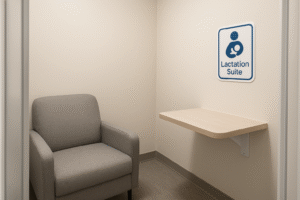
Keeping breast milk at a safe temperature (below 39°F / 4°C) is the top priority.
Here’s how you can maintain that:
- Use frozen gel packs or dry ice (check airline policy first).
- Avoid opening your cooler frequently.
- If you have a long layover, find airport nursing rooms or family lounges — many U.S. airports now include Mamava pods or lactation suites with outlets and sinks.
For detailed freezing timelines, check our related guide on how long does breast milk last in a deep freezer (U.S. storage guide 2025).
🧴 Storing Milk After Arrival
Once you reach your destination:
- Transfer milk to a refrigerator immediately.
- If the milk partially thawed during travel, use it within 24 hours.
- Never refreeze completely thawed milk.
If you’re staying at a hotel, request a mini fridge or ask the front desk to store it in a staff freezer (most U.S. hotels are accommodating for breastfeeding moms).
🧼 Cleaning and Hygiene Tips for Traveling Moms
- Bring a small cleaning kit with bottle brushes, pump wipes, and dish soap.
- If you’re pumping in-flight, use battery-powered or manual pumps for convenience.
- Pack multiple small storage bottles instead of one large container to avoid spoilage.
According to the CDC Breast Milk Handling Guidelines, milk can stay at room temperature for up to 4 hours — but when traveling, colder is always safer.
🛡️ Extra Tip: Know Your Airline’s Policy
Some airlines, like Delta and Alaska Airlines, provide extra freezer space or outlets for moms pumping onboard.
Always check their website before flying — every airline has slightly different rules for handling ice packs and cooler bags.
For instance:
- Delta Air Lines: Allows gel packs and offers onboard storage if space permits.
- United Airlines: Recommends pre-frozen packs but no dry ice without declaration.
❄️ Expert Insight: Keep a Backup Plan
Even with all preparation, delays can happen.
That’s why experienced moms carry a mini travel pump, extra bags, and sterile wipes.
If milk gets too warm or questionable in texture, it’s safer to discard it than risk feeding spoiled milk.
For a quick spoilage check, read our post how to tell if frozen breast milk is bad.
🧾 FAQ: Flying with Breast Milk in the U.S.
Q1: Can I carry breast milk in my checked luggage?
It’s allowed, but not recommended — baggage compartments often get too warm. Carry milk with you in the cabin instead.
Q2: How much breast milk can I bring on a plane?
There’s no specific limit for medically necessary liquids like breast milk, but keep it reasonable (under 1–2 liters is best).
Q3: Can TSA officers refuse my cooler bag?
No — as long as it follows the TSA medical liquid rule and is declared properly.
Q4: What if I’m traveling internationally?
Always check your destination country’s import policy — some nations have restrictions on bringing milk across borders.
🧩 Conclusion: Fly Confidently, Pump Smartly
Traveling with breast milk doesn’t have to be stressful.
With the right packing system, TSA-approved coolers, and up-to-date knowledge of airline policies, you can fly anywhere with peace of mind — knowing your milk stays safe for your baby.
👉 For full freezing and thawing safety, visit Breast Milk Storage: Complete U.S. Moms’ Guide (2025 Edition).
👉 For official U.S. travel updates, refer to TSA’s Travel Guidance for Nursing Mothers and CDC’s Breast Milk Storage Guidelines.

